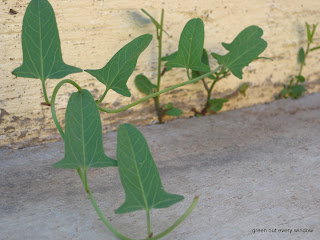A Nation Sown by Gardeners
"Founding Gardeners"
By ANDREA WULF
Reviewed by BEL MILLS
George Washington was an obsessive gardener; Thomas Jefferson, a stealthy seed smuggler; and John Adams, so taken with manure, he once examined a pile of it while on a diplomatic excursion in Europe.
These are just some of the amusing revelations awaiting readers of “Founding Gardeners,” Andrea Wulf’s engrossing follow-up to her award-winning book, The Brother Gardeners. Here Andrea Wulf makes the case that we can’t understand the first four presidents, and the nation they envisioned, unless we understand how these men saw themselves: as gardeners, first and foremost.
Take George Washington, Revolutionary War hero and first U.S. president. When 32,000 British troops prepared to invade New York the summer of 1776, General Washington rallied his men, reminding them they were “Freemen fighting for the blessings of liberty.” Washington knew his men were not only inexperienced but also woefully outnumbered and weakened by smallpox. With these facts no doubt weighing on his mind, Washington made certain, before he slept, to write a long letter to the manager of his Virginia plantation, pondering, Wulf wrote, “’the voluptuous blossom of rhododendron, the sculptural flowers of mountain laurel and the perfect pink of crabapple.’”
On the brink of war, Washington was busy planning two groves to be planted on either side of his home.
While this scene will ring true for any gardener who has obsessed about their hobby at an inopportune moment, Wulf says Washington’s timing was not altogether inappropriate. He was, in fact, planning a garden planted with trees native only to America, with no British trees allowed. At a time when British landscape design was all the rage among colonists—Washington was planning the first all-American ornamental garden.
These overlaps between plants and politics are everywhere in Wulf’s book, and for good reason. For America’s Founders, she writes, politics and plants were a single patriotic endeavor. In fact, even though every one of them, except for Adams, used slaves in their farming operations, they nonetheless believed that self-sufficient farmers were the guardians of liberty and the key to America’s future as an independent agrarian nation.
So it should come as no surprise that Jefferson, during his early trips to Europe, not only assisted Adams in trade negotiations, but also toured British gardens, and risked death to fill his coat pockets with Italian rice grains to distribute to green-thumb friends back home. Indeed, despite having penned the Declaration of Independence, Jefferson insisted that the “greatest service that can be rendered any country, is to add an useful plant to it’s culture.” True to his word, after he retired from the presidency in 1809, Jefferson devoted the crowning glory of his Monticello estate-- his 1,000 foot-long vegetable terrace-- not to feeding his own family, but to experimenting with new crops for American farmers.
By now we shouldn’t be surprised that the Founders were also fascinated with manure. Jefferson declared a British pamphlet on the topic a “charming treatise,” and Washington went as far as to dream of a farm manager who “Midas like,” could “convert every thing he touches into manure.” Adams mixed his manure with mud, lime, and seaweed, and once --while serving as the American Minister to the court at St. James’s Palace-- even hopped into a pile on the outskirts of London, “teasing apart the straw from the dung…before announcing with glee that it was ‘not equal to mine.’” Madison’s appreciation of animal waste was perhaps the most advanced of the four. Though soil chemistry was still in its infancy-- and the carbon and nitrogen cycles had yet to be understood-- he argued that vegetable matter that springs from the earth must return there. This, together with his arguments against exploiting nature for our own purposes, Wulf points out, marks him as the first pioneer of the American environmental movement, predating both John Muir and Henry David Thoreau.
Some of Wulf’s claims, to be sure, are overambitious. Her suggestion that a fortuitously timed garden tour helped the delegates of the Continental Congress in Philadelphia overcome a political stalemate, for example, is speculative at best. But her insistence that America’s Founders saw themselves as gardeners at heart has evidence on its side. In no other person is this more poignantly clear than in Washington, who fell ill after spending hours inspecting his farms during an icy storm in 1799. He ventured out again the following day nonetheless, marking trees he wanted removed to improve the appearance of his back lawn. He would die just a few days later, but not before he’d penned one last, nineteen page letter to his estate manager with instructions on crop rotations and manures.
History buffs, for sure, will find bushels of insights in Wulf’s new book. But gardeners, I have no doubt, will be this book’s most grateful audience. For us, Washington, Jefferson, Adams and Madison will no longer be just Founding Fathers, but kindred spirits as well.










